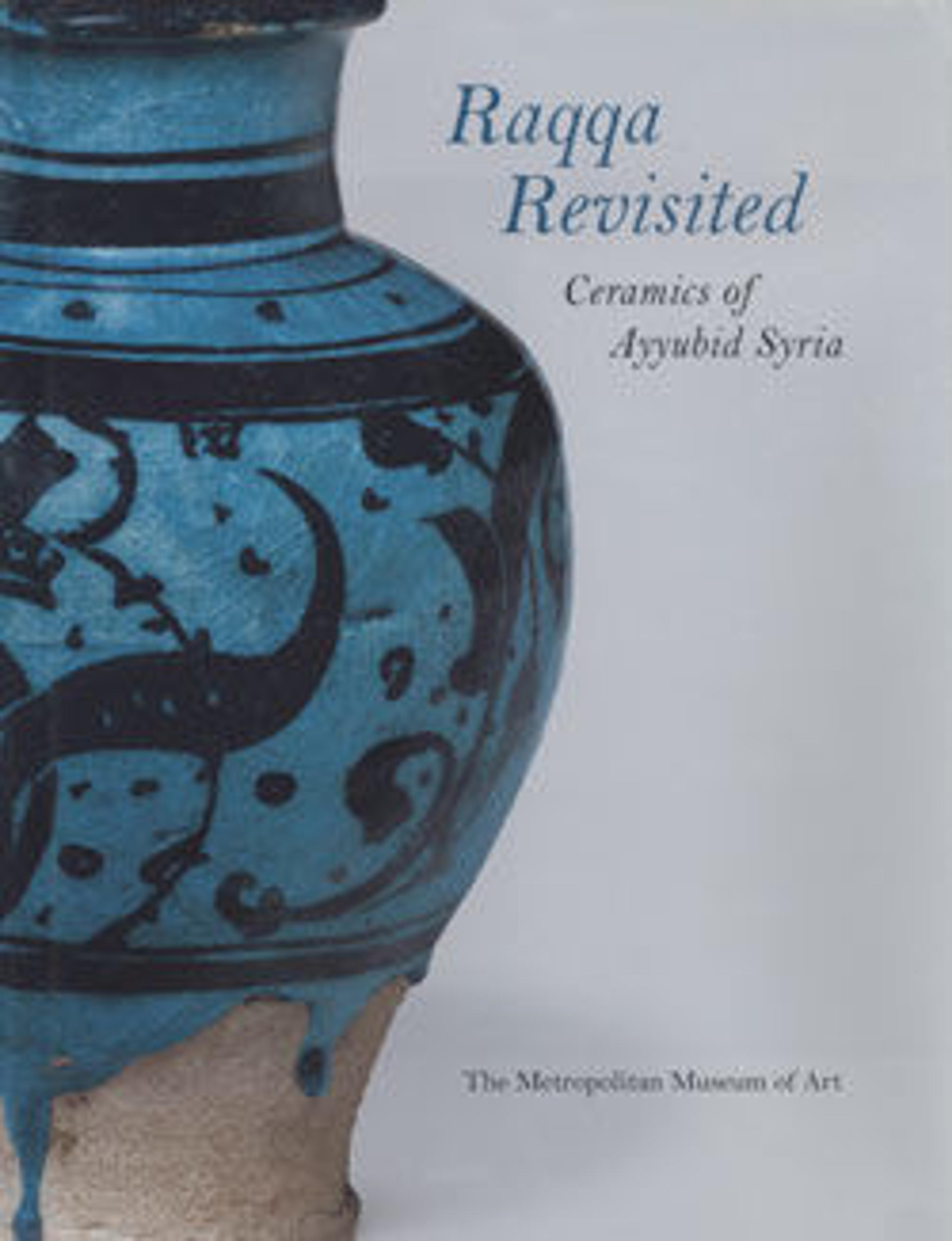Jar
This jar is said to come from the so-called "Great Find" in Raqqa in the early 20th century, when a colony of Circassians that was being relocated by the Ottomans was given permission to excavate an archaeological area in search of building material. They found a number of large jars containing intact vessels which were eventually sold on the market (see also 56.185.22 and 56.185.15).
The cursive inscription painted on the body reads "lasting glory and prosperity".
Artwork Details
- Title:Jar
- Date:late 12th–early 13th century
- Geography:Said to be from Syria, Raqqa
- Medium:Stonepaste; painted under transparent turquoise glaze
- Dimensions:H. 9 5/8 in. (24.4 cm)
Diam. 6 3/8 in. (24.4 cm) - Classification:Ceramics
- Credit Line:H. O. Havemeyer Collection, Bequest of Horace Havemeyer, 1956
- Object Number:56.185.18
- Curatorial Department: Islamic Art
Audio
6780. Jar
Music
ZEYBA RAHMAN: A good deal is known about Syria’s musical tradition - particularly the music of the later Middle Ages, because their traditions of music continue uninterrupted to the current day. The love song “Who are you, my beloved“ dates back from that period and continues to be sung at many happy occasions for the entertainment of the guests, even today. The northern Syrian city of Aleppo, one of the world’s oldest continuously inhabited cities, is an important center of Arabic classical music. Omar Sarmini was born in Aleppo and is regarded as a current day icon of this famous classical vocal tradition. He’s known to have mastered a vast spiritual repertoire as well. Let’s listen to Omar Sarmini and the Al Kindi Ensemble now.
Music: Omar Sarmini, The Aleppian Music Room, Man Kunta
More Artwork
Research Resources
The Met provides unparalleled resources for research and welcomes an international community of students and scholars. The Met's Open Access API is where creators and researchers can connect to the The Met collection. Open Access data and public domain images are available for unrestricted commercial and noncommercial use without permission or fee.
To request images under copyright and other restrictions, please use this Image Request form.
Feedback
We continue to research and examine historical and cultural context for objects in The Met collection. If you have comments or questions about this object record, please contact us using the form below. The Museum looks forward to receiving your comments.
